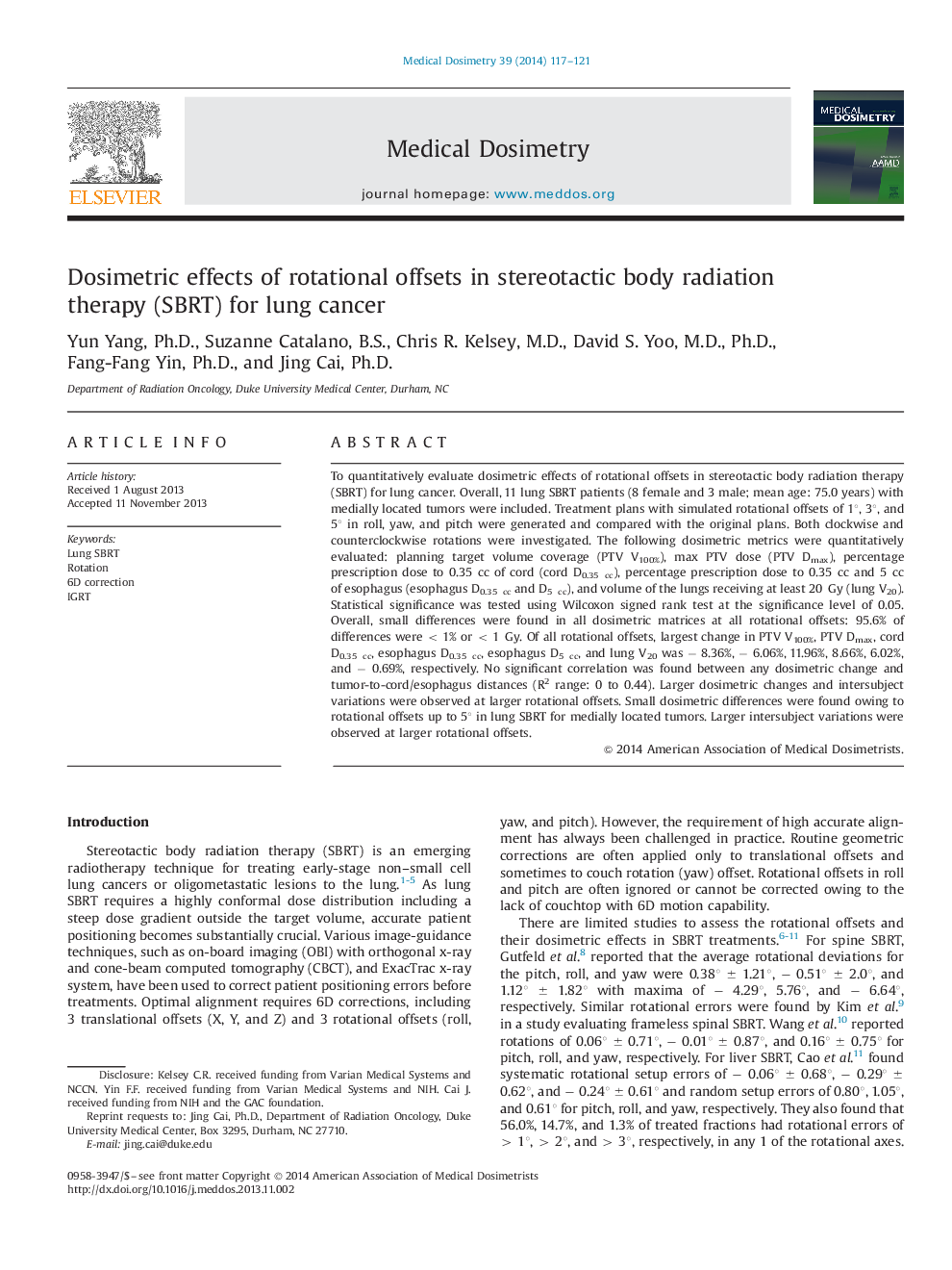| Article ID | Journal | Published Year | Pages | File Type |
|---|---|---|---|---|
| 1881966 | Medical Dosimetry | 2014 | 5 Pages |
Abstract
To quantitatively evaluate dosimetric effects of rotational offsets in stereotactic body radiation therapy (SBRT) for lung cancer. Overall, 11 lung SBRT patients (8 female and 3 male; mean age: 75.0 years) with medially located tumors were included. Treatment plans with simulated rotational offsets of 1°, 3°, and 5° in roll, yaw, and pitch were generated and compared with the original plans. Both clockwise and counterclockwise rotations were investigated. The following dosimetric metrics were quantitatively evaluated: planning target volume coverage (PTV V100%), max PTV dose (PTV Dmax), percentage prescription dose to 0.35 cc of cord (cord D0.35 cc), percentage prescription dose to 0.35 cc and 5 cc of esophagus (esophagus D0.35 cc and D5 cc), and volume of the lungs receiving at least 20 Gy (lung V20). Statistical significance was tested using Wilcoxon signed rank test at the significance level of 0.05. Overall, small differences were found in all dosimetric matrices at all rotational offsets: 95.6% of differences were < 1% or < 1 Gy. Of all rotational offsets, largest change in PTV V100%, PTV Dmax, cord D0.35 cc, esophagus D0.35 cc, esophagus D5 cc, and lung V20 was â 8.36%, â 6.06%, 11.96%, 8.66%, 6.02%, and â 0.69%, respectively. No significant correlation was found between any dosimetric change and tumor-to-cord/esophagus distances (R2 range: 0 to 0.44). Larger dosimetric changes and intersubject variations were observed at larger rotational offsets. Small dosimetric differences were found owing to rotational offsets up to 5° in lung SBRT for medially located tumors. Larger intersubject variations were observed at larger rotational offsets.
Related Topics
Physical Sciences and Engineering
Physics and Astronomy
Radiation
Authors
Yun Ph.D., Suzanne B.S., Chris R. M.D., David S. M.D., Ph.D., Fang-Fang Ph.D., Jing Ph.D.,
